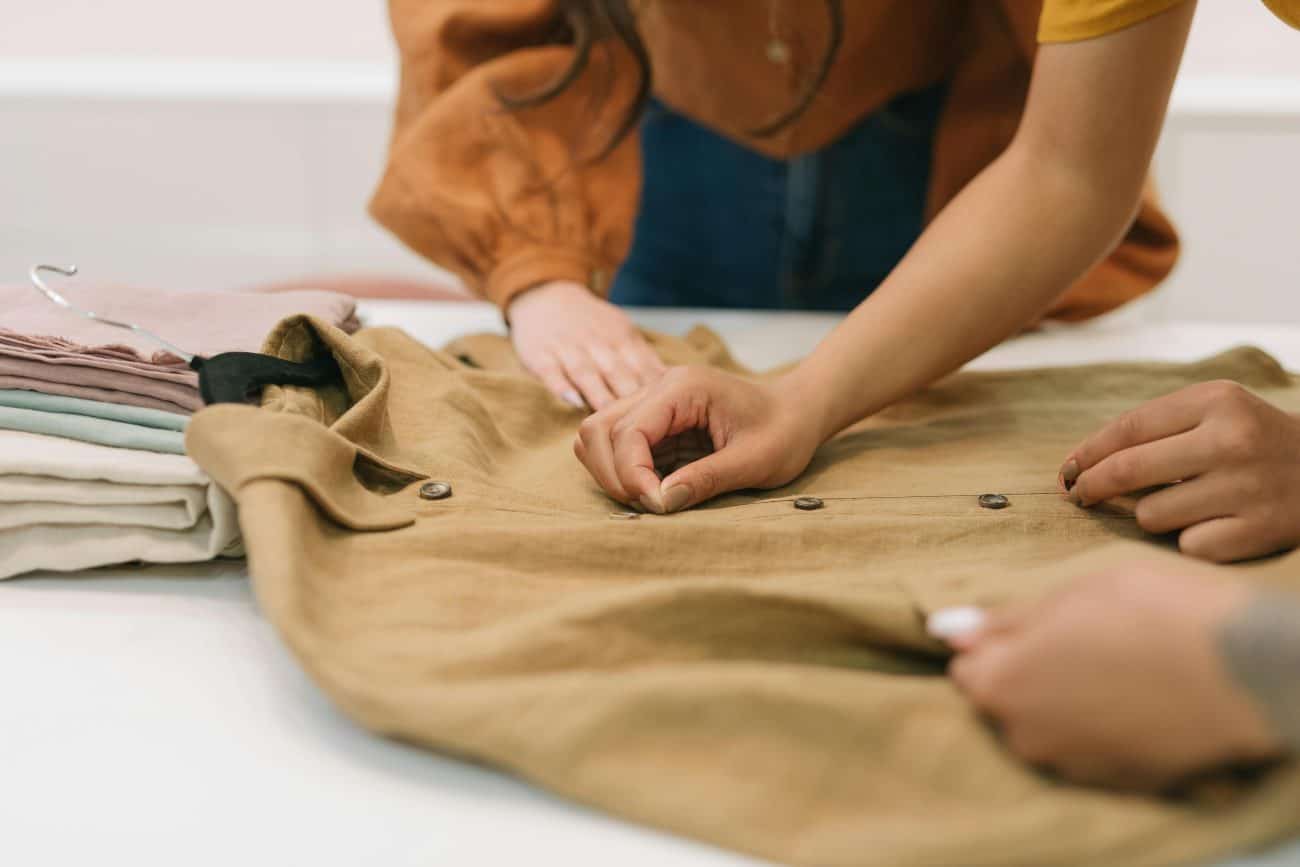Introduction
Have you ever discovered a small hole in your favorite shirt or jeans, and felt that sinking feeling? Don’t worry — you don’t need a sewing machine or even a needle to fix it.
In this 2025 guide, you’ll learn how to fix a hole in clothes without sewing using easy, modern methods that anyone can do at home. Whether it’s cotton, denim, or a delicate fabric, these quick hacks will make your clothes look almost brand new.
1. Identify the Type and Size of the Hole
Before you start fixing, check:
- Fabric type: cotton, denim, polyester, or wool.
- Hole size: small (under 1cm) or large (over 1cm).
- Edge damage: clean tear or frayed edges.
Knowing this helps you pick the right no-sew method. Tiny holes can often be fixed invisibly, while larger ones may need creative repair.
2. Use Fabric Glue (Best for Small Holes)
Fabric glue is your best friend for invisible, no-sew repairs.
Steps:
- Lay the clothing flat on a table.
- Apply a small amount of fabric glue under the hole edges.
- Press the sides together carefully.
- Place a piece of wax paper over it and press with a warm iron (if glue allows).
- Let it dry completely (usually 2–4 hours).
✅ Pro tip: Use clear-drying glue like Aleene’s Fabric Fusion or Tear Mender for a seamless finish.
3. Apply an Iron-On Patch
For jeans, jackets, or thicker clothes, iron-on patches are fast and durable.
Steps:
- Cut a patch slightly larger than the hole.
- Place it inside or on the back of the fabric.
- Cover with a cloth and press with an iron for 30–40 seconds.
- Let it cool before checking.
💡 Tip: For visible spots, use decorative patches — they’re trendy in 2025 fashion.
4. Try Fusible Web or Bonding Tape
This is perfect for fabrics where you don’t want any glue residue.
How to use it:
- Cut a small piece of fusible web (also called bonding web).
- Place it between the torn edges.
- Cover with a pressing cloth.
- Iron for 10–15 seconds on medium heat.
The heat melts the web, bonding the fabric edges together almost invisibly.
5. Use Heat-Activated Fabric Mender Sheets
If you prefer an all-in-one solution, try fabric mender sheets available in 2025.
They’re transparent adhesive sheets designed to repair holes without stitching.
Steps:
- Cut a small piece of the mender sheet.
- Place it under the hole.
- Iron gently for 20 seconds.
- Let it cool — the hole disappears under the bonded layer.
6. Use Fabric from the Inside (Invisible Patch)
For delicate clothes or unique materials, use hidden fabric from the inside hem.
Steps:
- Cut a tiny piece from a hidden area (like inner seam).
- Glue it under the hole with fabric glue.
- Press lightly and let dry.
Result: You’ve repaired the hole using the same fabric, almost invisible from outside.
7. No-Sew Decorative Options (For Style Lovers)
If the hole is visible and you like creativity, go bold:
- Add embroidered patches (iron-on or sticker type).
- Use heat-transfer vinyl designs.
- Attach fabric stickers or small badges for a custom look.
In 2025, visible repairs are part of sustainable fashion trends.
8. How to Prevent Future Holes
- Avoid overloading your washing machine.
- Wash delicate clothes in laundry bags.
- Keep clothes away from rough zippers or velcro.
- Apply a small drop of clear nail polish to stop fraying edges.
9. Frequently Asked Questions (FAQs)
Q1: Can I use super glue instead of fabric glue?
No. Super glue can make fabric stiff and may discolor it. Always use a fabric-specific adhesive.
Q2: Will these fixes survive washing?
Yes, if you use high-quality fabric glue or fusible web and let it cure for at least 24 hours before washing.
Q3: What’s the best fix for jeans?
Use iron-on denim patches or fabric glue with a piece of denim underneath.
Q4: Can I repair delicate clothes like silk or chiffon?
Yes, use transparent fusible bonding film and very low heat.
Conclusion
Fixing a hole in clothes without sewing is no longer a hassle. With the right materials — glue, iron-on patches, or fusible web — you can repair almost any fabric in minutes.
This saves money, reduces waste, and helps you keep your favorite outfits longer.
So next time you spot a tiny hole, don’t panic — fix it smartly, no needle required
